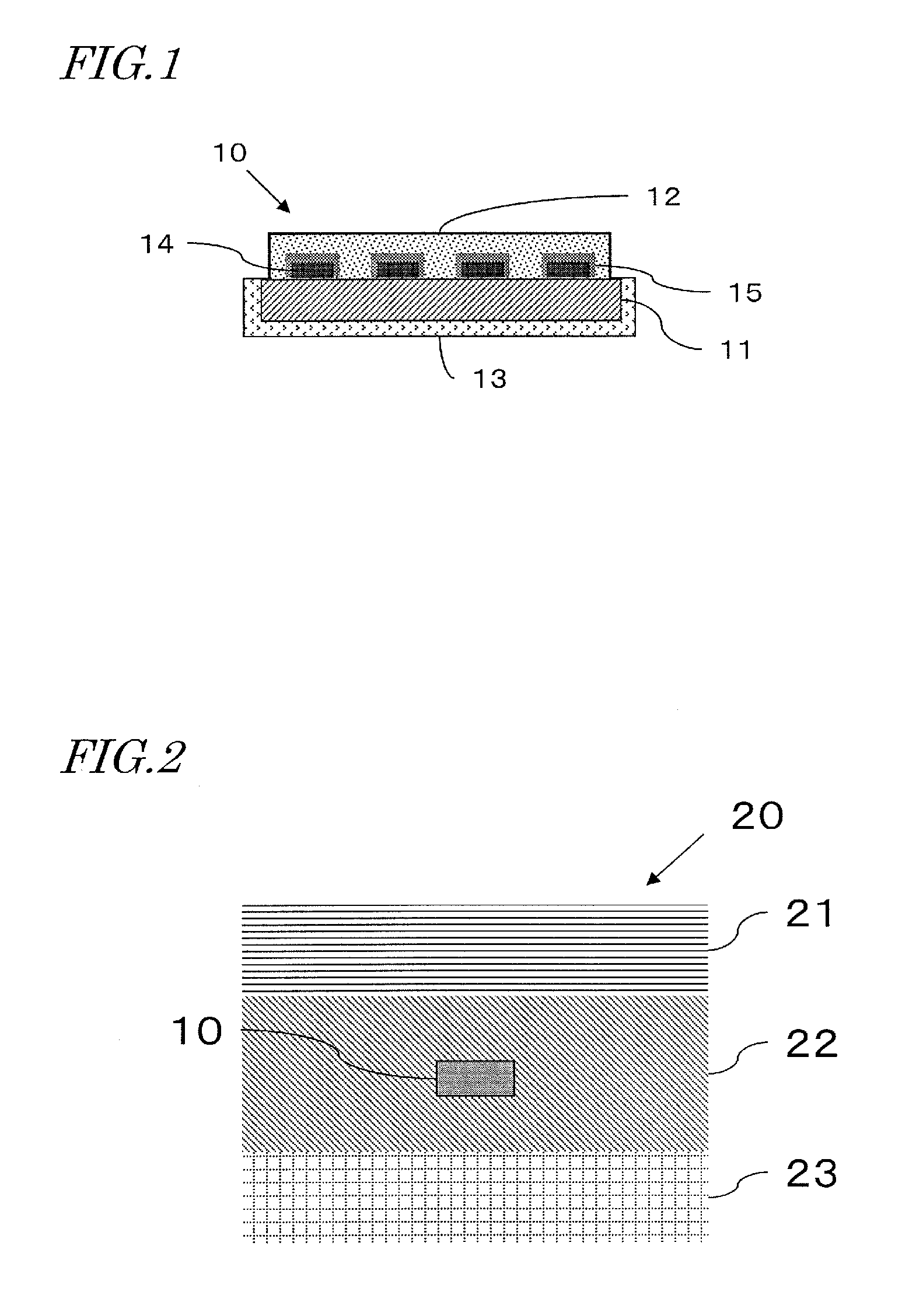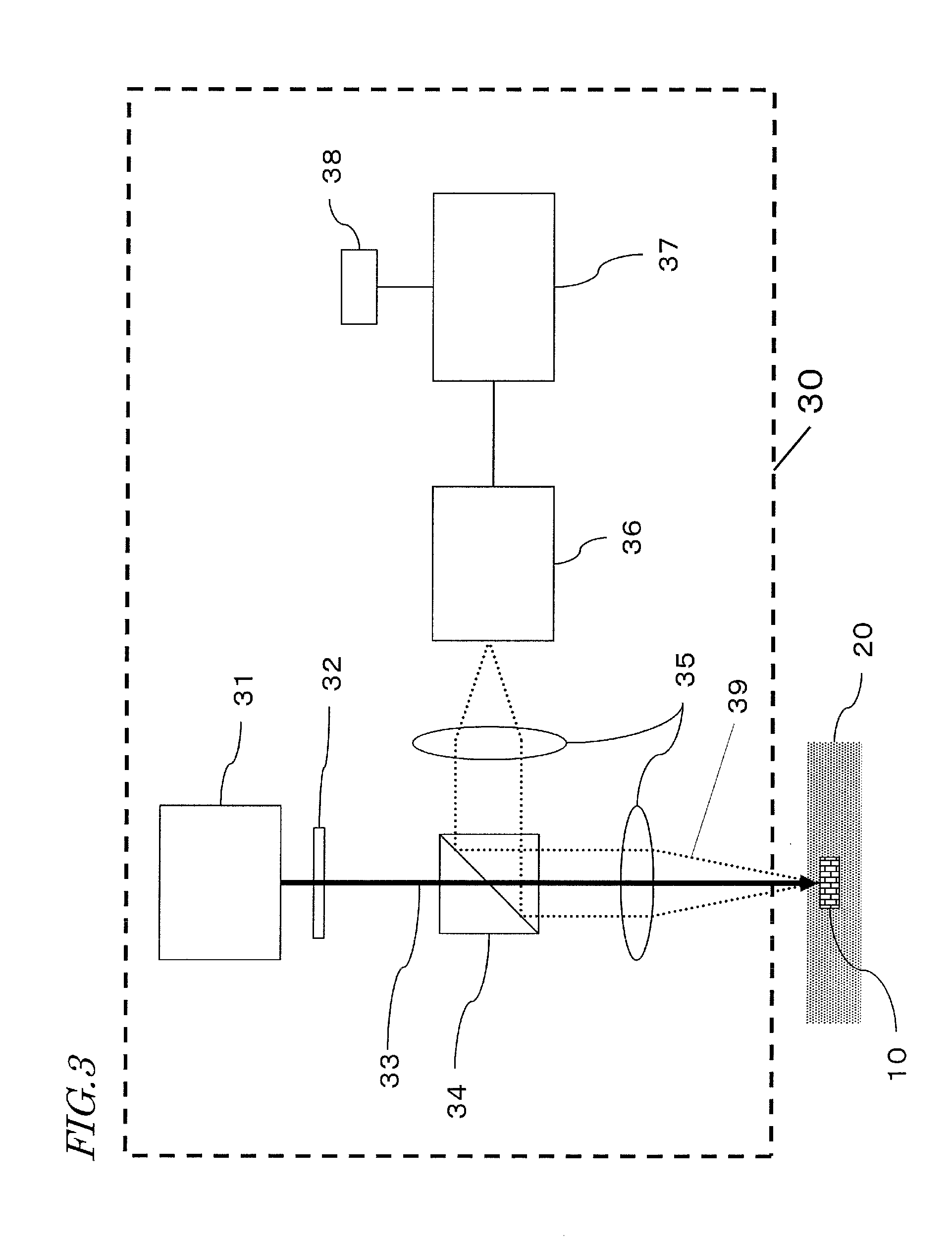Sensor chip, detection method, and detection apparatus
- Summary
- Abstract
- Description
- Claims
- Application Information
AI Technical Summary
Benefits of technology
Problems solved by technology
Method used
Image
Examples
embodiment 1
[0033]Embodiment 1 will be described with reference to FIG. 6.
[0034]FIG. 6 is a diagram showing a sensor chip 110 according to Embodiment 1. The sensor chip 110 of Embodiment 1 is a sensor chip which detects an analyte inside a subject. The sensor chip 110 may be embedded in the subject.
[0035]The sensor chip 110 includes a substrate 111, a metal pattern 114, a proximate substance 115, and a light shielding layer 112. The metal pattern 114 is provided on the substrate 111. The metal pattern 114 induces a surface plasmon wave by being irradiated with excitation light.
[0036]The proximate substance 115 is provided on or near the metal pattern 114. When irradiated with excitation light, the proximate substance 115 generates first surface-enhanced Raman-scattered light having a first peak. The first surface-enhanced Raman-scattered light does not vary with changes in the concentration of the analyte.
[0037]Moreover, the proximate substance 115 is a substance that binds to the analyte. When...
embodiment 2
[0045]Embodiment 2 will be described with reference to FIG. 1 to FIG. 5, and FIG. 7. In Embodiment 2, an analyte detection method by using the sensor chip 110 described in Embodiment 1 is proposed.
[0046]Embodiment 2 illustrates the sensor chip 10 shown in FIG. 1 as a typical example of the sensor chip 110. Embodiment 2 illustrates a biological body as the subject. Embodiment 2 illustrates glucose as the analyte. Moreover, a phenylboronic acid compound is illustrated as the proximate substance. In Embodiment 2, a light scattering layer is illustrated as the light shielding layer.
[0047]FIG. 7 is an illustrative flowchart of the detection method according to Embodiment 2. The detection method of Embodiment 2 includes steps (a) to (g) as described below. With the detection method of Embodiment 2, by utilizing scattered light from the proximate substance, it can be determined whether the light shielding layer has been degraded inside the subject or not. In doing so, obtaining a second in...
embodiment 3
[0104]Embodiment 3 will be described with reference to FIG. 8. In Embodiment 3, a detection apparatus for detecting an analyte by using the sensor chip 110 described in Embodiment 1 is proposed.
[0105]FIG. 8 is a diagram showing a detection apparatus 130 according to Embodiment 3. The detection apparatus 130 of Embodiment 3 is a detection apparatus which detects an analyte by using the sensor chip 110 described in Embodiment 1. The detection apparatus 130 includes a light source 131 which emits excitation light, a detection section 140 which detects scattered light, and a calculation section 137.
[0106]The detection apparatus 130 irradiates the sensor chip 110, which is e.g. embedded inside a subject 200, with excitation light from the light source 131 to generate first surface-enhanced Raman-scattered light. The detection apparatus 130 detects the generated first surface-enhanced Raman-scattered light with the detection section 140, thereby obtaining a first intensity Xa.
[0107]At thi...
PUM
 Login to View More
Login to View More Abstract
Description
Claims
Application Information
 Login to View More
Login to View More - R&D Engineer
- R&D Manager
- IP Professional
- Industry Leading Data Capabilities
- Powerful AI technology
- Patent DNA Extraction
Browse by: Latest US Patents, China's latest patents, Technical Efficacy Thesaurus, Application Domain, Technology Topic, Popular Technical Reports.
© 2024 PatSnap. All rights reserved.Legal|Privacy policy|Modern Slavery Act Transparency Statement|Sitemap|About US| Contact US: help@patsnap.com










